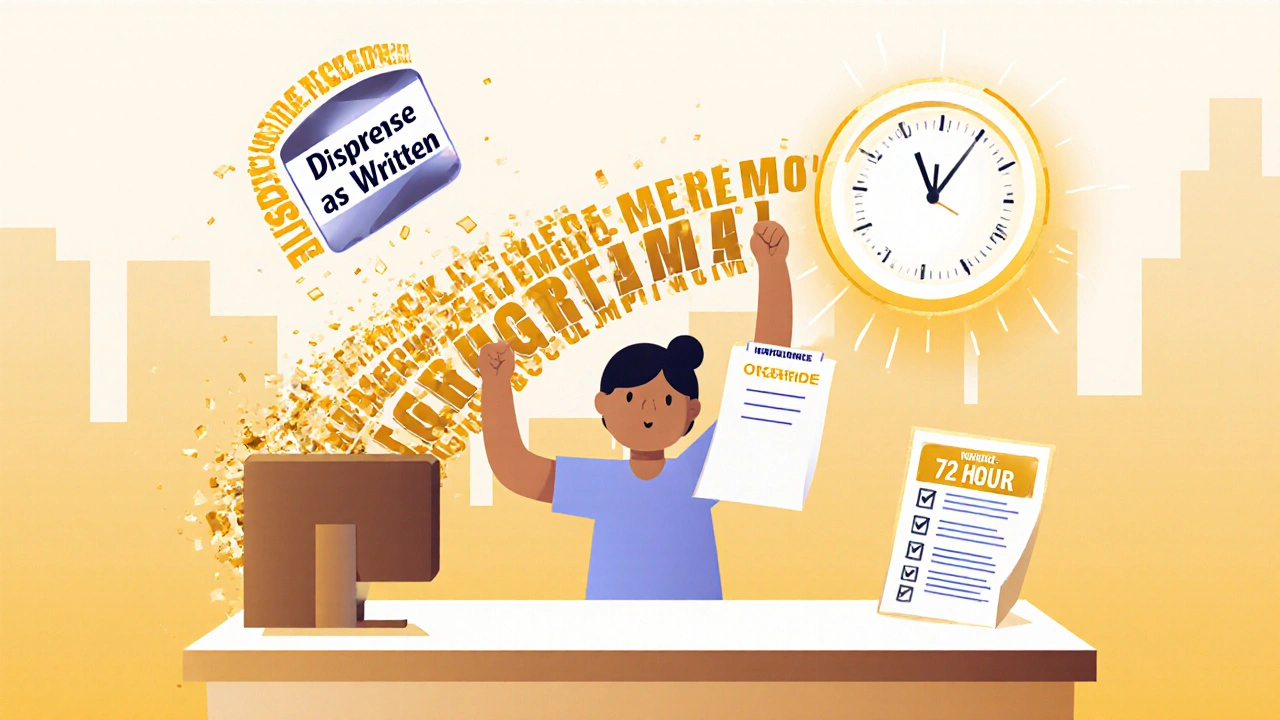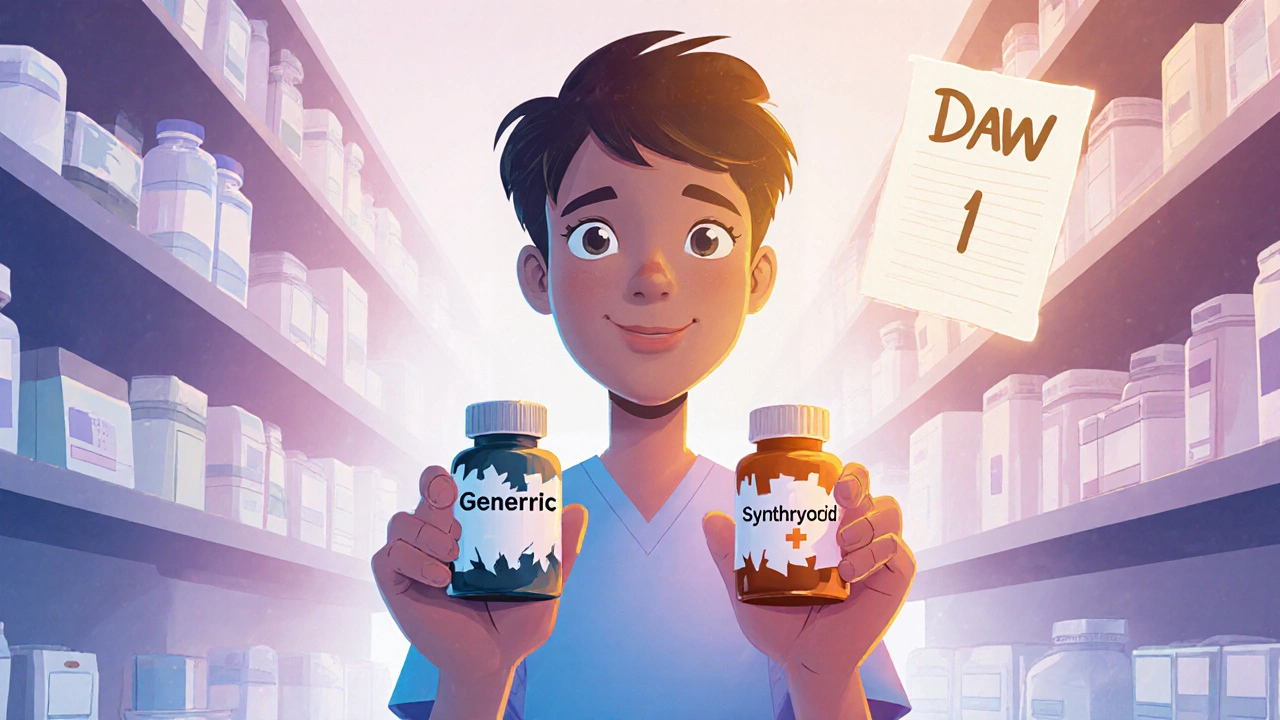Switching from a generic medication back to the brand-name version isn’t just about preference-it’s a medical decision that can affect your health, your wallet, and your daily routine. You might have tried the generic version because it was cheaper, but now you’re dealing with new side effects, unstable symptoms, or a feeling that the medication just doesn’t work the same. Maybe you developed a rash, your thyroid levels are all over the place, or your seizures are coming back. If that’s you, you’re not alone. Thousands of people in Australia, the U.S., and around the world have been in the same boat. The good news? Switching back is possible. The catch? It has to be done right.
Why You Might Need to Switch Back
Generic drugs are required by law to contain the same active ingredient, strength, and dosage form as the brand-name version. In theory, they should work the same. But here’s the reality: inactive ingredients can be different. These include dyes, fillers, binders, and preservatives-things that don’t treat your condition but help the pill hold together or look a certain way. For most people, this doesn’t matter. For some, it’s a dealbreaker.Patients with narrow therapeutic index drugs-like warfarin, levothyroxine, phenytoin, or cyclosporine-are especially vulnerable. These medications have a tiny window between working and causing harm. A small change in how your body absorbs the drug can mean the difference between control and crisis. A 2022 study in Neurology found that patients with epilepsy who switched between different generic versions of the same drug had a 27% higher chance of breakthrough seizures. That’s not a small risk.
Other common reasons people switch back:
- Unexplained skin rashes or itching after starting the generic
- Worsening of symptoms despite correct dosing
- Changes in lab results (like INR for warfarin or TSH for thyroid meds)
- Feeling mentally or physically off-fatigue, brain fog, anxiety-after switching
- Allergic reaction to a dye or filler in the generic (e.g., FD&C Yellow No. 5)
If you’re experiencing any of these, it’s not "in your head." It’s a real, documented issue.
What the Science Says
The FDA requires generics to be bioequivalent to the brand-meaning they deliver 80% to 125% of the active ingredient into your bloodstream compared to the brand. That sounds strict, but it’s actually a wide range. For drugs like levothyroxine, where even a 5% change in absorption can throw off your thyroid levels, that 45% swing is too much.The FDA itself warns that switching between different manufacturers of narrow therapeutic index drugs-even between two generics-can cause loss of efficacy or adverse reactions. In 2022, they issued a safety communication specifically about this. And while 99.7% of generic switches work fine (according to Dr. Jerry Avorn), that 0.3% represents real people who end up in the ER.
Studies show switching back from generic to brand has an 84.3% success rate in restoring stability-compared to 92.7% success when switching from brand to generic. Why the difference? Because when you switch back, you’re not just changing the label-you’re changing the entire formulation. Your body has already adjusted to the generic. Now you’re asking it to adapt again.
How to Legally and Safely Switch Back
You can’t just walk into a pharmacy and ask for the brand. Pharmacists are trained to dispense the cheapest option unless told otherwise. Here’s how to do it properly:- Document your experience. Don’t say, "I don’t feel right." Say: "After switching to generic levothyroxine, my TSH rose from 2.1 to 8.9 over six weeks despite no dosage change. My symptoms of fatigue and weight gain returned. I was stable on Synthroid for two years prior." Include lab results. Print them out.
- Ask your doctor for a "Brand Medically Necessary" prescription. This isn’t optional. Your doctor must write "Dispense as Written" or "DAW 1" on the prescription. In Australia, this is called a "Prescriber’s Direction to Dispense as Written." In the U.S., CMS requires this for Medicare Part D coverage.
- Specify the exact brand name. Don’t just write "Synthroid." Write: "Synthroid 50 mcg tablets, not Levoxyl or Tirosint." Why? Because even different brands of the same drug can vary. Levoxyl and Synthroid, while both brand-name levothyroxine, have different fillers. Your body may react to one and not the other.
- Request therapeutic drug monitoring. If you’re on warfarin, thyroid meds, or seizure drugs, your doctor should order blood tests within 7-10 days after switching back. This confirms your levels are stable.
- Get a letter of medical necessity. Some insurance companies require this. Your doctor can write a short letter explaining why the generic failed and why the brand is essential. Include your diagnosis, previous stability on brand, and clinical evidence of failure with generic.
Doctors who’ve done this before know the drill. But if yours doesn’t, give them this: "I need you to document therapeutic failure with the generic and specify the exact brand required under CMS DAW-1 guidelines." That’s enough to get them moving.

Insurance and Cost Hurdles
This is where most people get stuck. Brand-name drugs cost 3 to 5 times more than generics. Synthroid can be $112 a month as a generic. The brand? $450. That’s not affordable for most.But here’s the key: insurance doesn’t automatically deny you. They require proof that the generic didn’t work. If your doctor documents it properly, your claim has a 63.7% chance of being approved on appeal.
Medicare Part D plans require prior authorization for 68% of brand-name drugs when a generic exists. That means your doctor has to submit paperwork before the pharmacy can fill it. Processing can take 14 days or more. During that time, you might go without your medication. That’s dangerous.
Pro tip: Ask your doctor to request an "emergency override" if your condition is unstable. Many plans will approve it within 72 hours if there’s clear risk of harm.
Private insurers like Blue Cross Blue Shield have higher denial rates-up to 82% in some cases. If you’re denied, file an appeal immediately. Include your lab results, doctor’s letter, and any pharmacy records showing you were switched without consent.
What to Do If the Pharmacy Refuses
You might show up at the pharmacy with a perfectly written prescription, and they say, "We don’t stock that brand." Or worse: "We can’t fill it without prior auth."Here’s what to do:
- Ask if they can order it. Most can get it in 1-2 days.
- If they say no, ask for the name of the distributor they use. Call that distributor directly. Many will ship to pharmacies that don’t normally carry the brand.
- Try a different pharmacy. Independent pharmacies are often more flexible than chains.
- If you’re on Medicare, call 1-800-MEDICARE. They can help you find a pharmacy that will fill your prescription under the "Medically Necessary Brand Exception."
In Australia, pharmacists must notify your doctor if you have an adverse reaction to a generic. That’s a legal requirement. Use it. Tell your pharmacist: "I had a reaction. Please notify my prescriber as required by the TGA."
Real Stories, Real Results
Sarah K., 58, from Brisbane, switched from generic levothyroxine to Synthroid after her TSH spiked to 11.4. She had constant fatigue and gained 12 pounds in three months. Her doctor wrote "DAW 1," and her private insurance approved it after two appeals. Within 10 days, her TSH dropped back to 2.3. "I felt like myself again," she said.James, 42, with epilepsy, switched back to Lamictal after generic lamotrigine caused two seizures in six weeks. His neurologist submitted a letter with EEG results. His insurer denied it three times. He appealed with a letter from his neurologist and a copy of the FDA’s safety warning. Approved on the fourth try. He hasn’t had a seizure since.
These aren’t rare cases. They’re common enough that the FDA, AMA, and American Pharmacists Association all have official guidelines on how to handle them.

When You Should NOT Switch Back
Not everyone needs to switch back. If you’re stable on a generic, with no side effects and normal lab results, don’t switch. The cost difference is real. And switching unnecessarily can cause instability.Also, avoid switching back for drugs that aren’t in the narrow therapeutic index category. For things like statins, blood pressure meds, or antidepressants, generics are almost always fine. The risk of switching back for these drugs outweighs the benefit.
And never switch back on your own. Always involve your doctor. Medication changes like this can be dangerous without monitoring.
What’s Changing in 2025
New rules are coming. In 2024, Medicare Part D introduced a new "Medically Necessary Brand Exception" pathway with a 72-hour processing guarantee for certain drugs. In Australia, the TGA is rolling out a new labeling system for generics that will list all inactive ingredients on the package insert-something they didn’t require before.Pharmacies are also updating their systems. Epic and other EHR platforms now have mandatory "Brand Medically Necessary" checkboxes. If your doctor doesn’t check it, the system won’t let the pharmacy dispense the brand.
These changes make the process more structured-but they also mean you need to be more proactive. Don’t assume your doctor knows the rules. Bring the facts. Bring your labs. Bring your experience.
Final Checklist Before You Switch
Before you even step into the pharmacy, make sure you have:- ✅ A prescription with "DAW 1" or "Dispense as Written"
- ✅ The exact brand name written out (e.g., "Synthroid 50 mcg")
- ✅ Lab results showing failure with generic
- ✅ A doctor’s note explaining medical necessity
- ✅ Contact info for your insurance’s prior auth line
- ✅ A backup plan (another pharmacy, a 3-day supply of brand on hand if possible)
If you’ve done all this, you’ve done everything right. You’ve put your health first-and you’ve done it safely, legally, and with evidence.
Can I just ask my pharmacist to give me the brand name instead of the generic?
No. Pharmacists are required by law to dispense the least expensive option unless the prescription says "Dispense as Written" or "DAW 1." Even if you pay out of pocket, they can’t give you the brand unless the doctor has specified it. Always get the correct wording on the prescription first.
Are brand-name drugs better quality than generics?
In terms of active ingredients, no-they’re identical. But brand-name manufacturers often use more consistent formulations and stricter quality controls. They rarely change inactive ingredients. Generics, especially from overseas manufacturers, may change suppliers or formulas without notice. That’s why some patients react differently.
What if my insurance denies my request to switch back?
File an appeal. Include your doctor’s letter, lab results, and any evidence of adverse effects. Many denials are overturned on appeal-especially when you show clinical failure, not just preference. If you’re on Medicare, call 1-800-MEDICARE for help with the process.
How long does it take to feel better after switching back?
It varies. For thyroid meds, many feel better within 7-10 days. For seizure meds, stabilization can take up to 2-4 weeks. Blood tests are the best way to confirm your levels are back in range. Don’t assume you’re fine just because you feel better-get tested.
Can I switch back to a different brand instead of the original one?
Only if your doctor specifically prescribes it. For example, if Synthroid caused a reaction, your doctor might prescribe Levoxyl instead. But you can’t just swap one brand for another without medical approval. Each has different fillers. What worked before might not work again.







Alex Czartoryski
November 19, 2025 AT 17:51Let me tell you, I switched from Synthroid to generic levothyroxine because my insurance forced it. Three weeks later, I was sweating through my pajamas at 3 a.m., heart racing like I’d run a marathon while asleep. My TSH jumped from 2.4 to 9.1. I thought I was dying. Turns out, my body just hated the dye in the generic. I went back to brand after six appeals and a doctor’s letter that basically screamed in legalese. I’m not some hypochondriac. This isn’t placebo. It’s chemistry. And the system doesn’t care until you’re in the ER.
Victoria Malloy
November 20, 2025 AT 07:30This post saved me. I was about to give up on finding the right med until I read Sarah’s story. I’ve been on levothyroxine for 12 years and never had an issue until last year. Now I’m back on Synthroid, my energy’s back, and I’m actually sleeping through the night. It’s not about being lazy or entitled-it’s about your body recognizing what it needs. Thank you for documenting this so clearly.
Gizela Cardoso
November 20, 2025 AT 11:58I’m a pharmacist in Ontario, and I see this all the time. Patients come in desperate, crying because they can’t sleep or their hands are shaking. We’re trained to push generics, but we’re not trained to understand how different fillers affect people. One guy came in with a prescription for Lamictal and told me he’d had two seizures in two months on the generic. I ordered the brand that day. No prior auth needed-he was in crisis. Sometimes the system fails, but we can still choose to help.
deepak kumar
November 22, 2025 AT 02:06From India, where generics are the only option-and we’re proud of it. But I get it. In my cousin’s case, switching from brand to generic phenytoin triggered seizures. He’s now on the brand again, paid out of pocket. The science says they’re equal, but biology isn’t a spreadsheet. Your body remembers. If you feel off, trust yourself. Advocate. Even if it takes 10 calls, 3 letters, and a doctor who’s tired of paperwork-you deserve stability.
Dave Pritchard
November 23, 2025 AT 21:31As a nurse practitioner, I’ve seen this too many times. Patients think they’re being dramatic when they say, ‘The generic doesn’t work.’ But it’s not drama-it’s pharmacokinetics. I now automatically ask: ‘Did you switch meds recently?’ If yes, and symptoms changed? We check labs before adjusting dosage. Most docs don’t think to ask. This post should be required reading for every prescriber.
kim pu
November 24, 2025 AT 19:45Big Pharma’s been scamming us since the 70s. They let generics rip off the formula, then quietly change the fillers to make you dependent on their $450 brand again. And now they’ve got the FDA in their pocket. You think the 0.3% failure rate is real? Nah. It’s buried. They don’t track reactions unless you die. My friend’s mom died from a generic warfarin switch-officially ‘natural causes.’ Bullshit. The system is rigged. Fight back. Demand the brand. Make them prove it’s safe.
malik recoba
November 25, 2025 AT 08:52i just wanted to say thank you for writing this. i switched to generic for my thyroid med last year and felt like a zombie for 6 months. my doc didn’t even ask if i’d switched. i had to bring the labs in myself. once we went back to brand, i cried because i remembered what it felt like to wake up without dread. it’s not about money for me-it’s about not feeling like i’m losing my mind.
Sarbjit Singh
November 26, 2025 AT 16:09Bro, I was skeptical too. But after my wife had two seizures on generic lamotrigine, we switched back to Lamictal. Two weeks later, she was laughing again. The pharmacy tried to give us a different generic. I said, ‘No. Lamictal. Or nothing.’ They called the doctor. He called the insurer. Took 11 days. But she’s seizure-free now. If your life’s on the line, don’t settle. Fight for the brand. You’re not being difficult-you’re being smart. 🙏
Angela J
November 27, 2025 AT 23:40Wait… so you’re telling me Big Pharma is secretly poisoning us with fillers in generics? And the FDA is covering it up? I knew it. They put aluminum in vaccines too. And glyphosate in your bread. You think your thyroid is the only thing they’re messing with? They’ve been testing on us for decades. Your ‘DAW 1’ form? That’s just a Band-Aid. The real fix is to boycott all pharma and go back to herbs. I’ve been taking ashwagandha for my TSH since 2021. No side effects. Just peace. 🌿
Sameer Tawde
November 29, 2025 AT 08:00You’re not alone. I’ve helped 17 patients switch back to brand meds this year. Every single one had lab evidence and real symptoms. Your doctor can help-but you need to show up with data, not feelings. Print your labs. Bring the FDA warning. Ask for DAW-1. It’s not hard. It’s just paperwork. And your life? Way more important than paperwork.